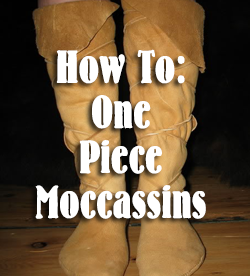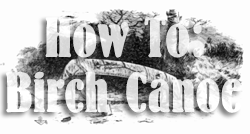Knots & Splices
Splices
There are two forms of splices used for joining two ropes together, a “short splice” and a “long splice.”
The short splice is used where a rope does not have to run through a block. The long splice is used where the diameter of a rope must not be increased and so that it may still pass through a block. The long splice takes a good deal of rope.
A splice weakens a rope about one-eighth.
A cut splice is also shown but it is not recommended as it brings the strain on the inside of the splice, the weakest part.
Short Splice
Where a rope does not need to run through a block, this is a quick splice. It is more troublesome than the eye splice though the principle is identical.
The two ends, unlaid, should be brought together carefully with the strands opposite and between as in Fig. I and Fig. 2. It is best to seize, i. e., wrap them temporarily, in this position.
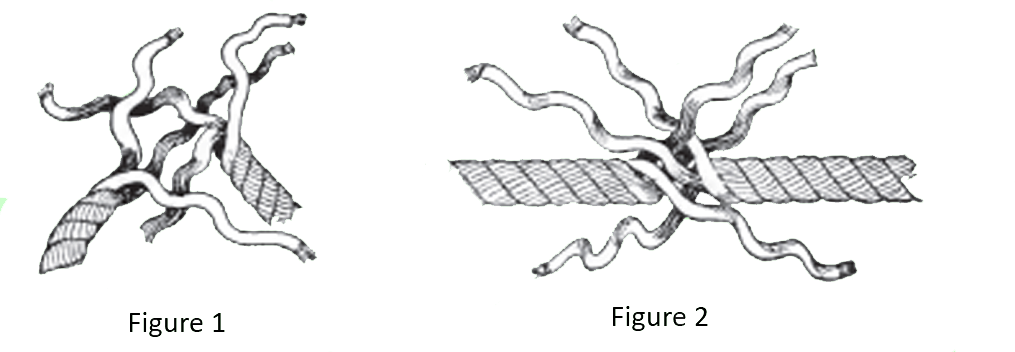
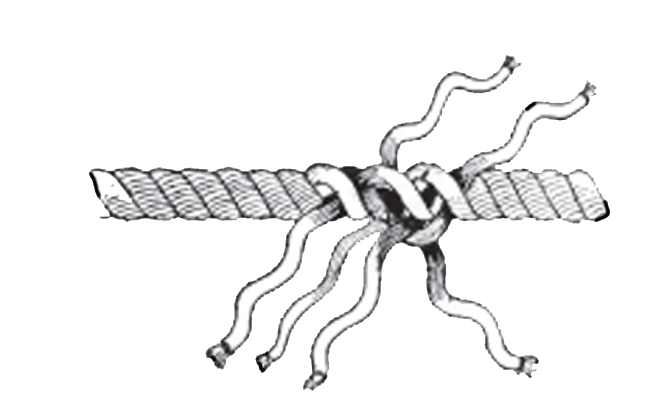
The free strands are then interwoven with the laid up rope, over and under (Fig. 3) and the result will be as Fig. 4.
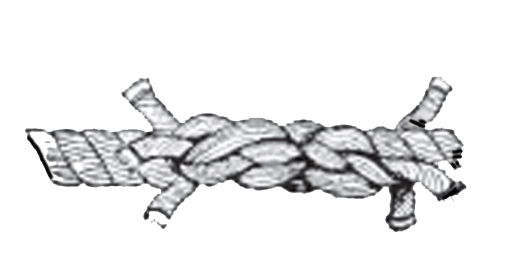
If a sufficient splice is made this may be tapered by cutting off fibers, but this is not necessary as it is a patch job in itself.
Splicing cannot be successfully described, the exactness becomes confusing in its length. But the process is simple with a rope in one's hands and the diagram before the eyes.
Long Splice
This splice is used when the rope is to run through a block or when the diameter of the rope must not be enlarged.
Unlay the strands of each rope for a convenient length and bring together as for a short splice.
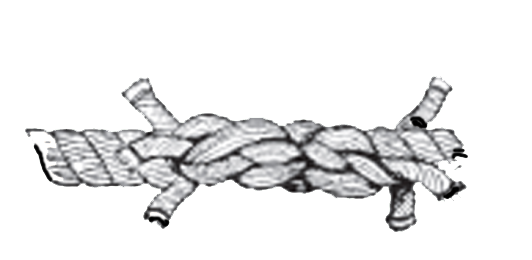
Fig. 1. and 2. Unlay to any desired length Strand D of one rope, laying in its place the nearest strand A of the other rope.
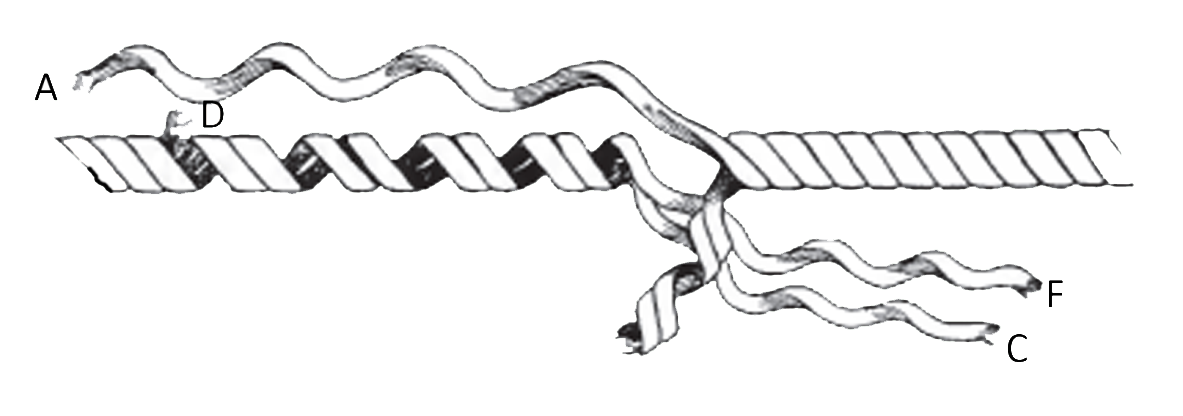
Figure 3 & 4 – Repeat the operation in the opposite direction with the other two strands, C and F.
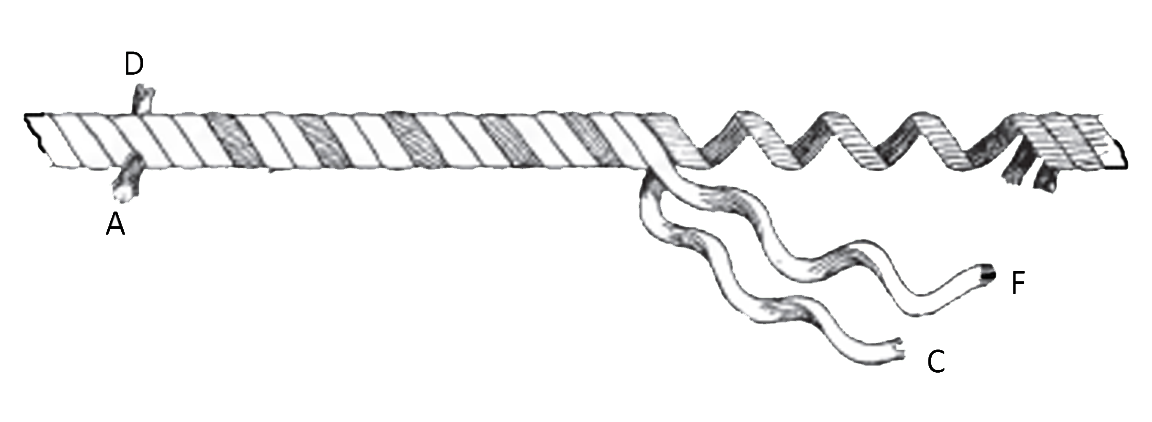

The ends of the strands should not be trimmed off close until the rope has been thoroughly stretched by work.
The ends may be fastened by tieing, running between strands, whipping with a few turns, or sewing.
Epe Splice – In order to form a neat eye in the end of a rope either empty or around a thimble – a thimble being a metal ring or loop to prevent chafing the outside being dished to fit the round of the rope – the strands are unlaid for a distance equal to three times the circumference of the rope and laid down on the rope after having shaped or fitted the eye to the required size.
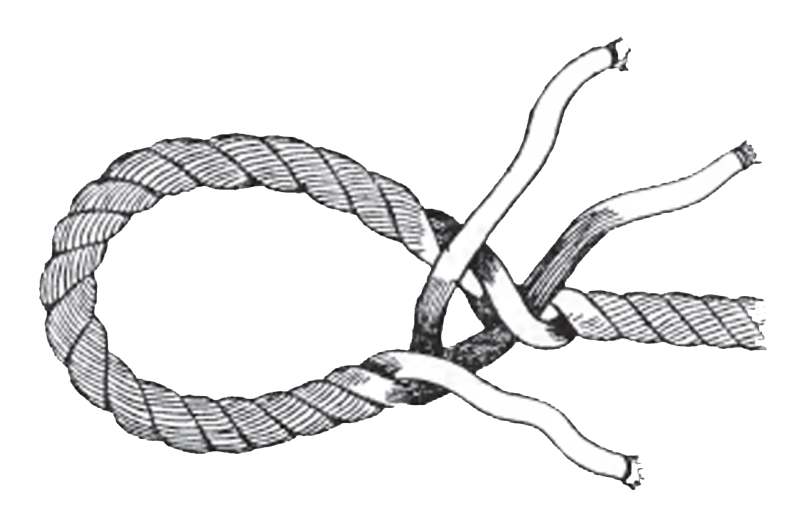
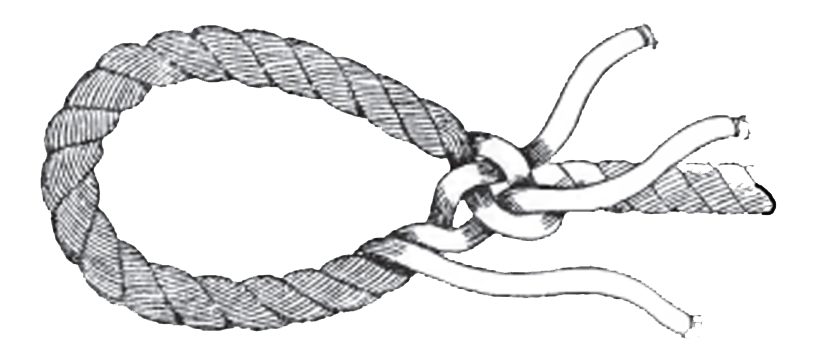
The strands of the rope are now pried open and the unlaid strands passed through as shown in the diagrams. This weaving should be continued over and under as shown until the length of strands (three times the circumference of the rope) are used up.
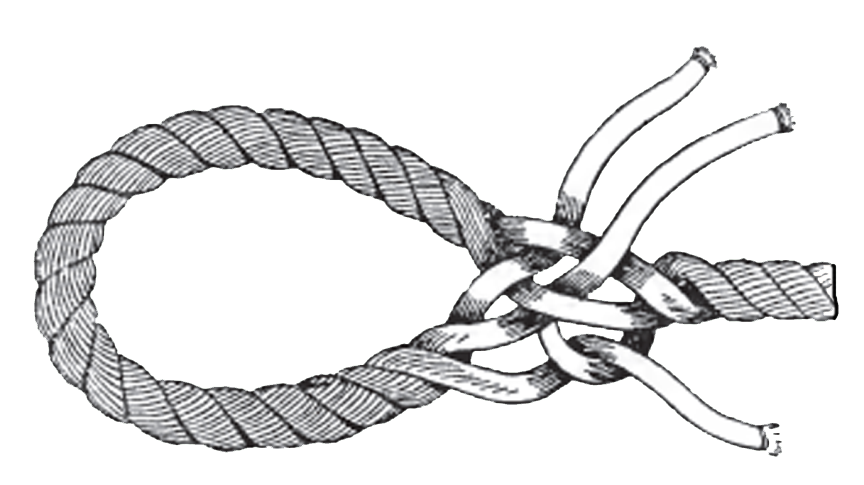
To taper the splice the unlaid strands should have a portion of the fibers cut out after the first or second weave has been made. The whole may then be whipped if desired. A marlinspike or tapered round stick should be used to pry open the strands.
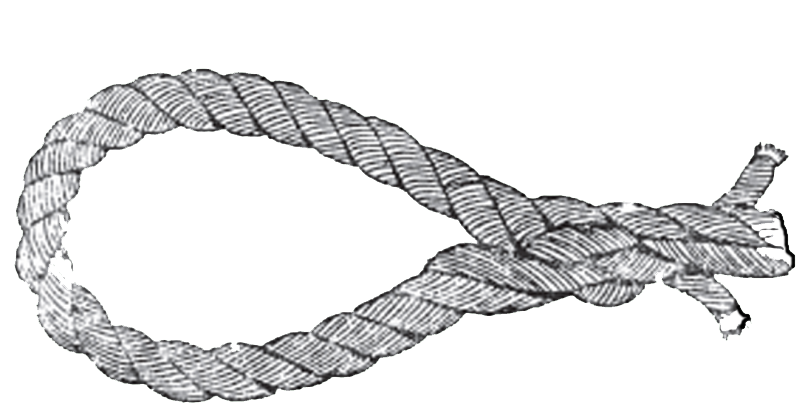
Flemish Eye – Is made by unlaying one strand of rope a little more than the circumference of the eye required.
The two stranded part is now bent around in the eye and laid alongside the rope. The two stranded part is now bent around in the eye and laid alongside the rope.
The strand which was removed is laid in its own groove but in a backward direction and three strands having been tapered by cutting away from time to time some of the fibers after the eye is complete the tapered strands can be tucked in to make a neat finish, as in a splice. It may also be whipped if desired.
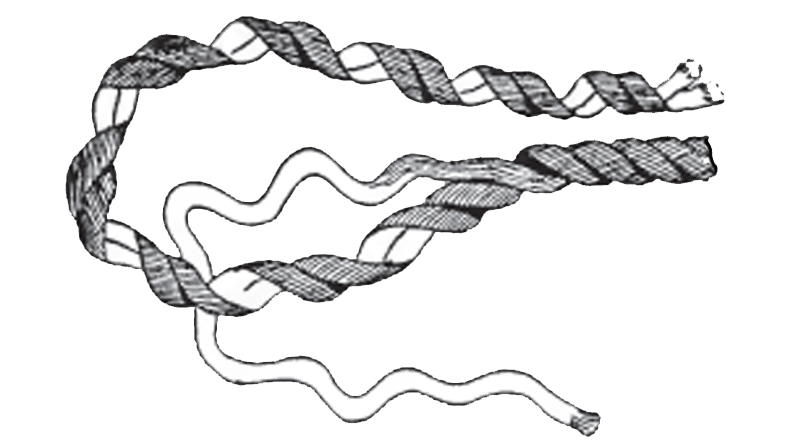
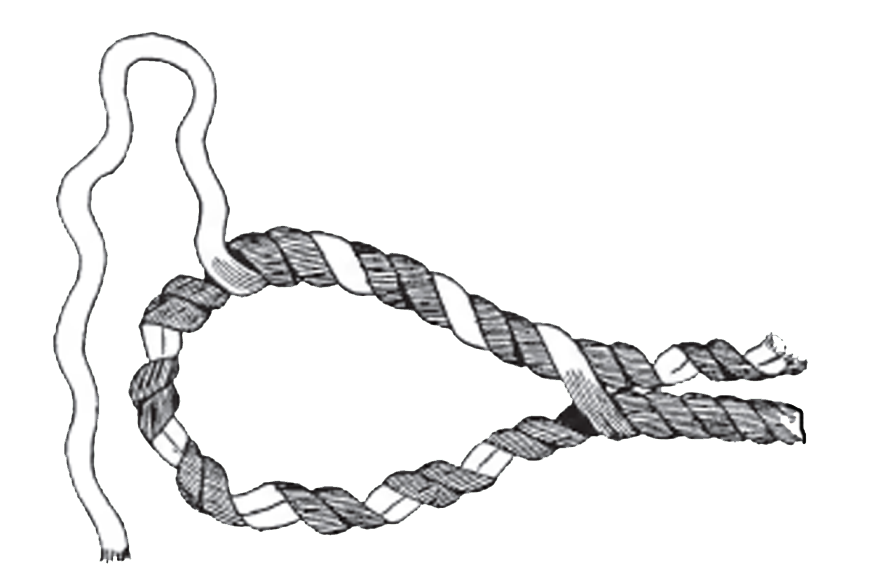
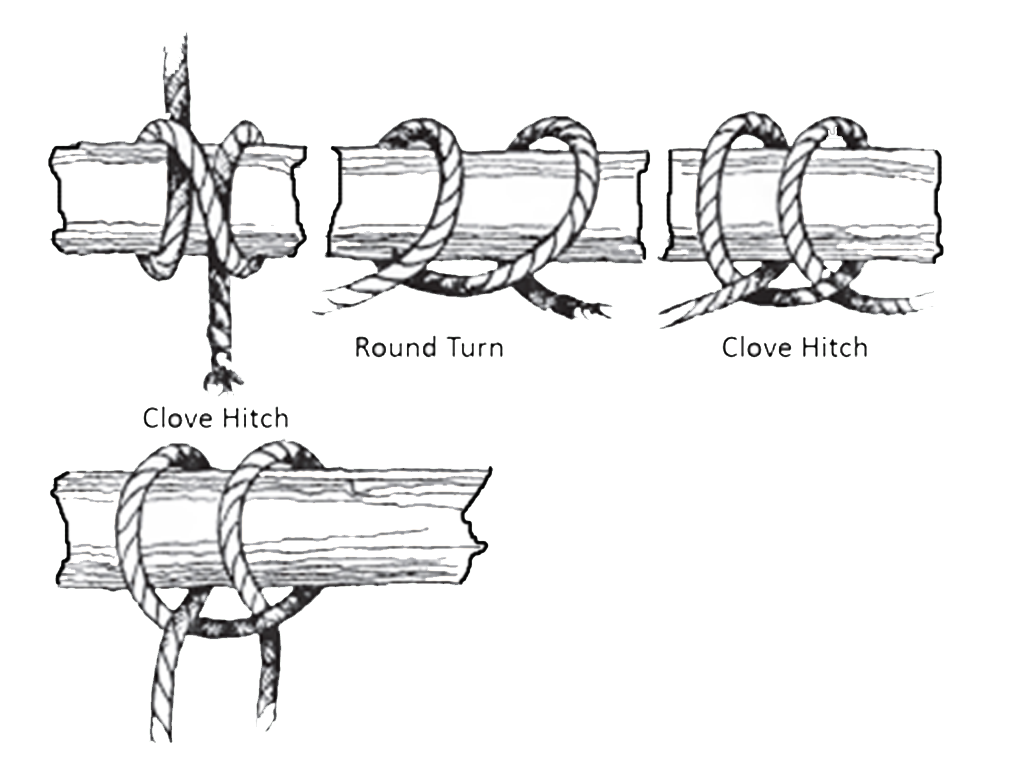
A clove hitch will bind against any strain and can easily be cast lose. Round Turn is to take in slack and hold it quickly or to payout slowly; it is not intended to hold and bind.
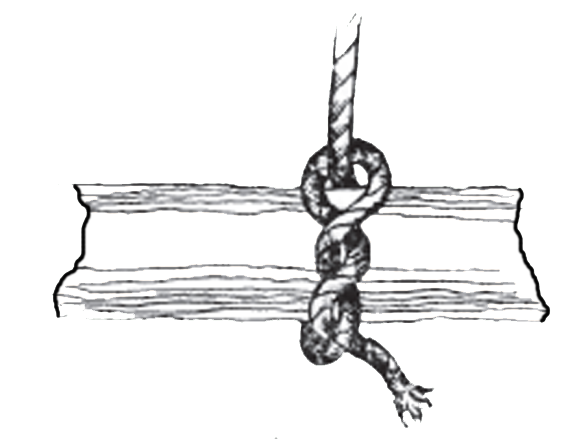
Timber Hitch - Will hold a quick hitch to secure a spar or log.

Timber Hitch and Half Hitch – an improvement on the former.
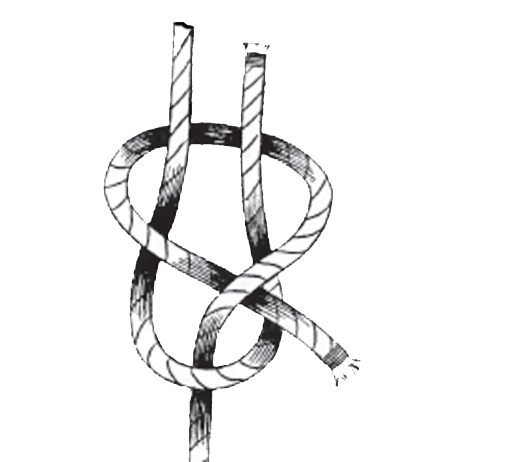
Single Sheet Bend – or Weaver's Knot, for joining ends of ropes together and without jamming, also to join one rope onto an eye splice
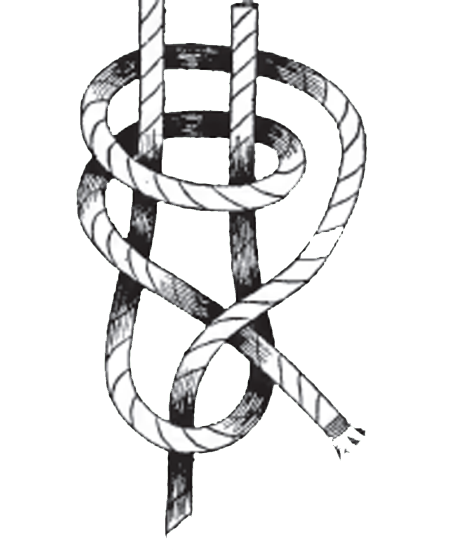
Double Bend – Much more secure than the single bend.
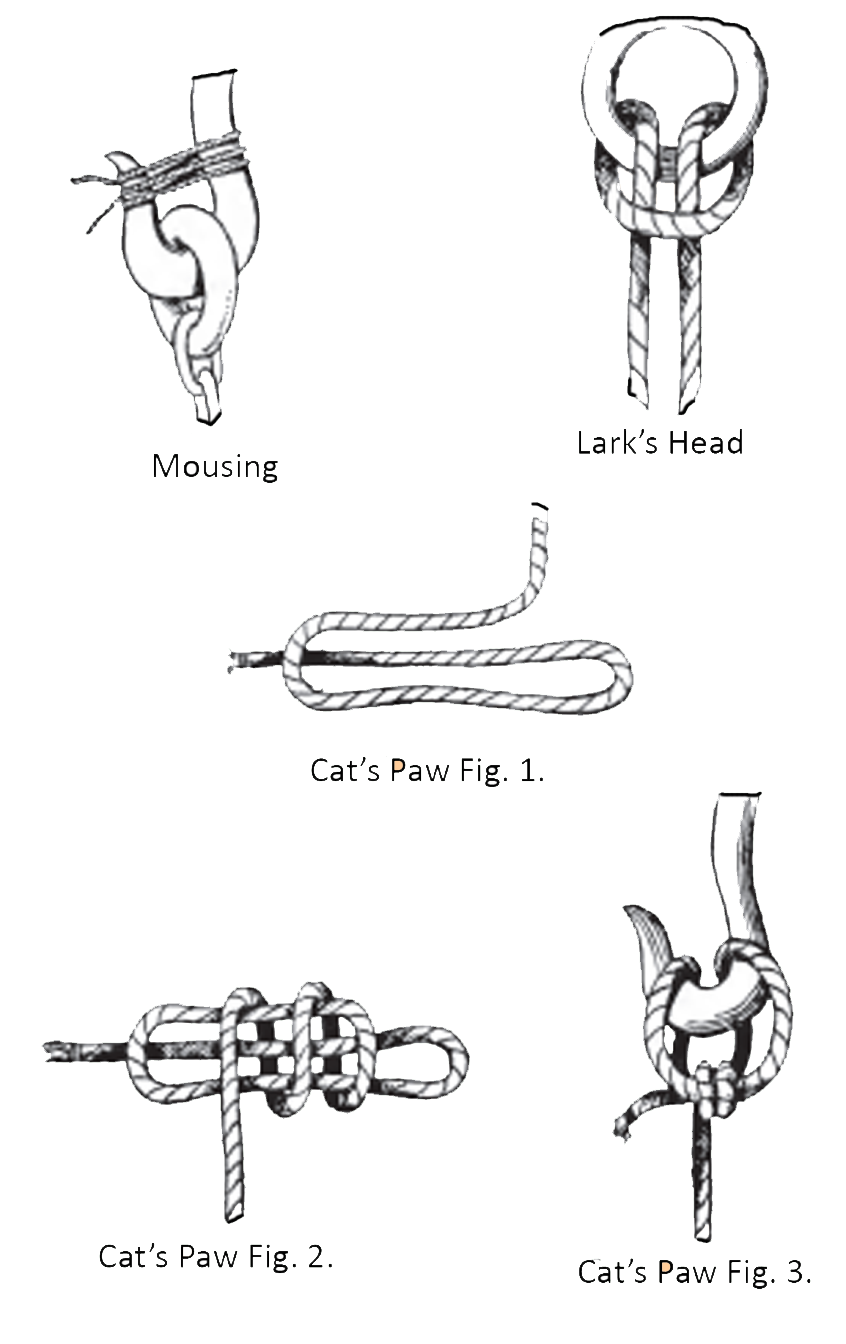
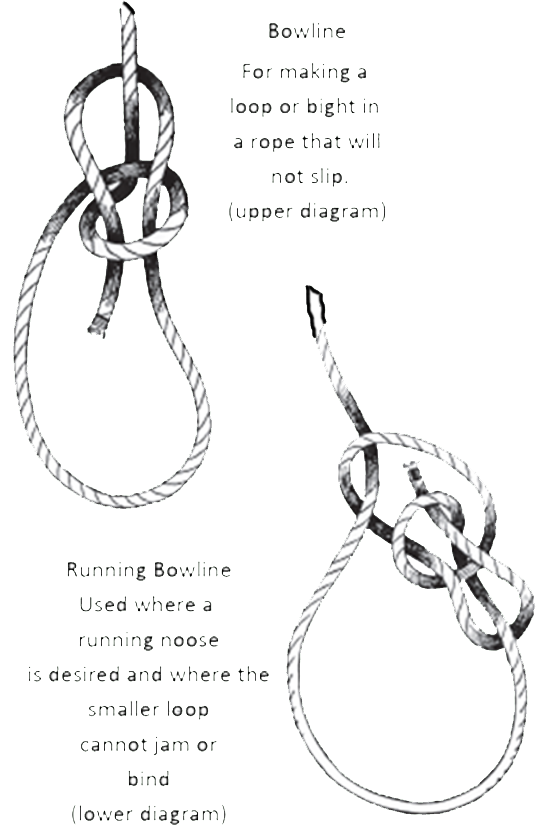
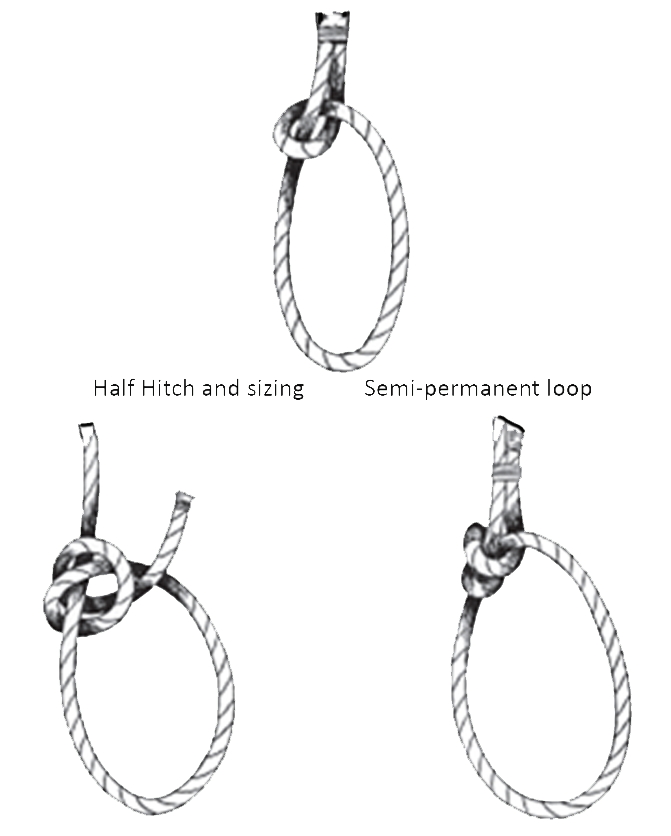
Midshipman's Hitch – A much better way of making the above, for the rope jams itself, and there is but little strain on the seizing. A man overboard catching a rope can make this – passing the bight between his legs and pressing the ropes together in his grasp in place of seizing. He could not tie a bowling or a jioose unless he had slack.
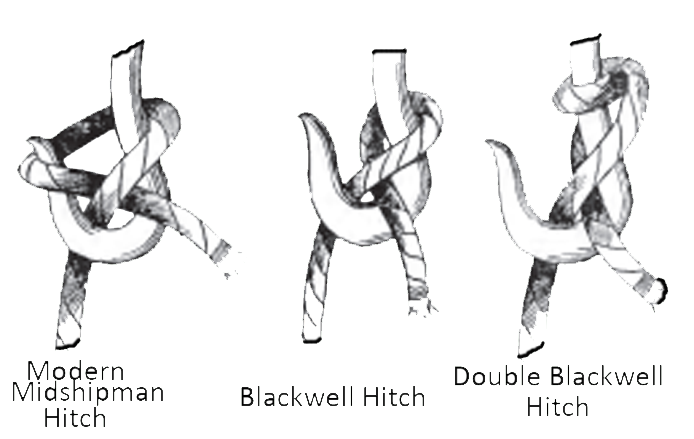
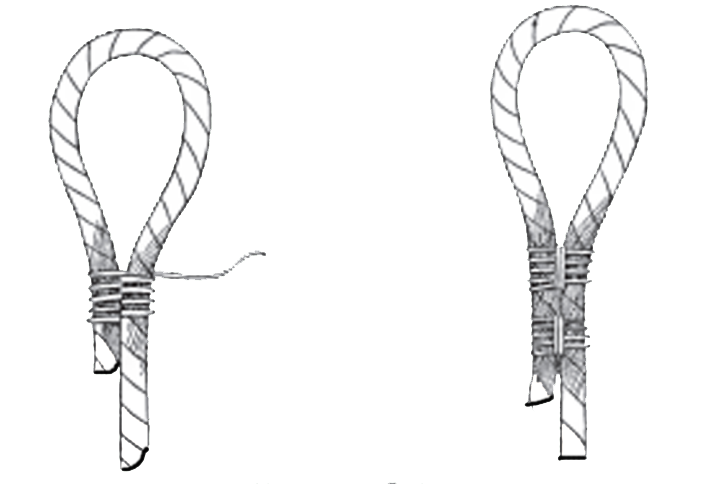
Nippering a Bight - Used when strain is to come all or chiefly on one rope.
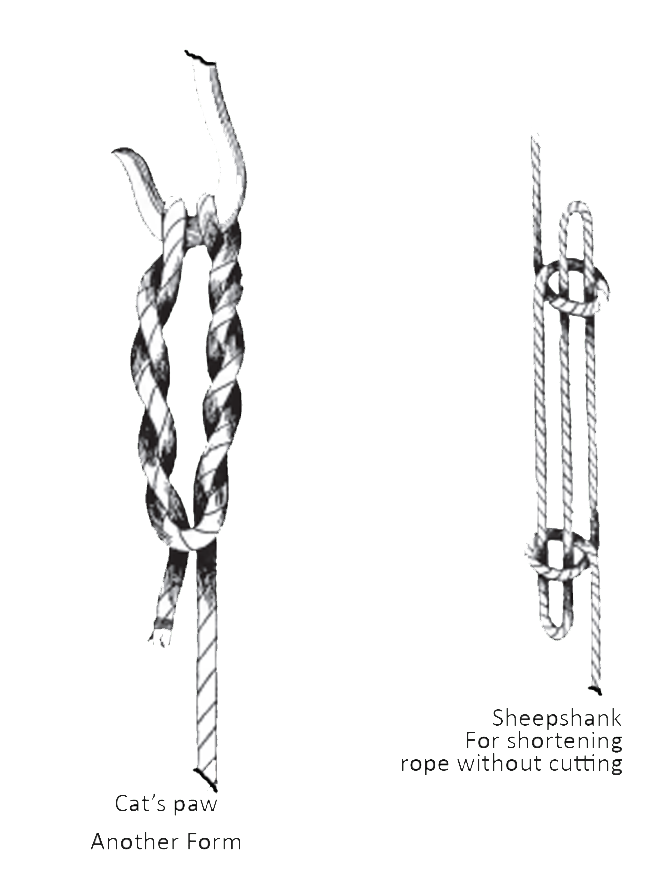
N. B. – In the following diagrams the knots, hitches, bends, etc., are shown open. They should be tightened and jammed to hold.
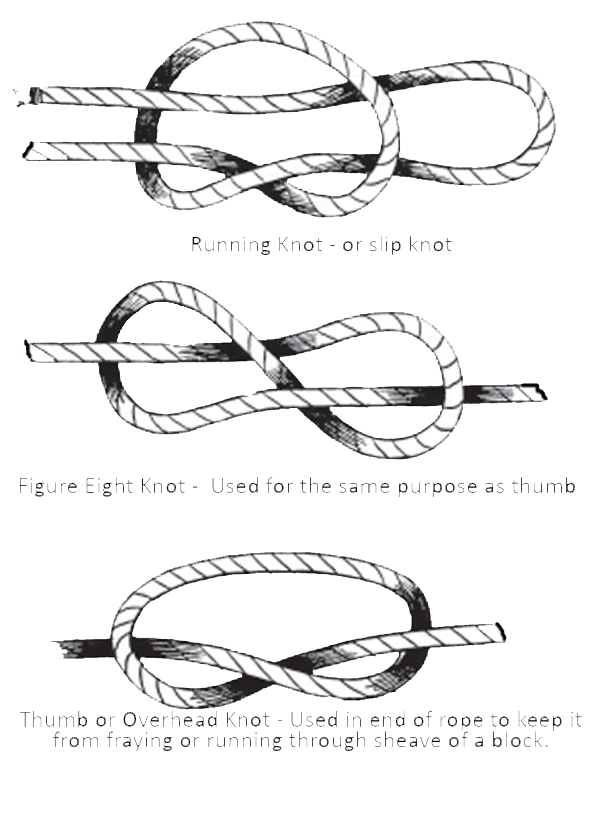
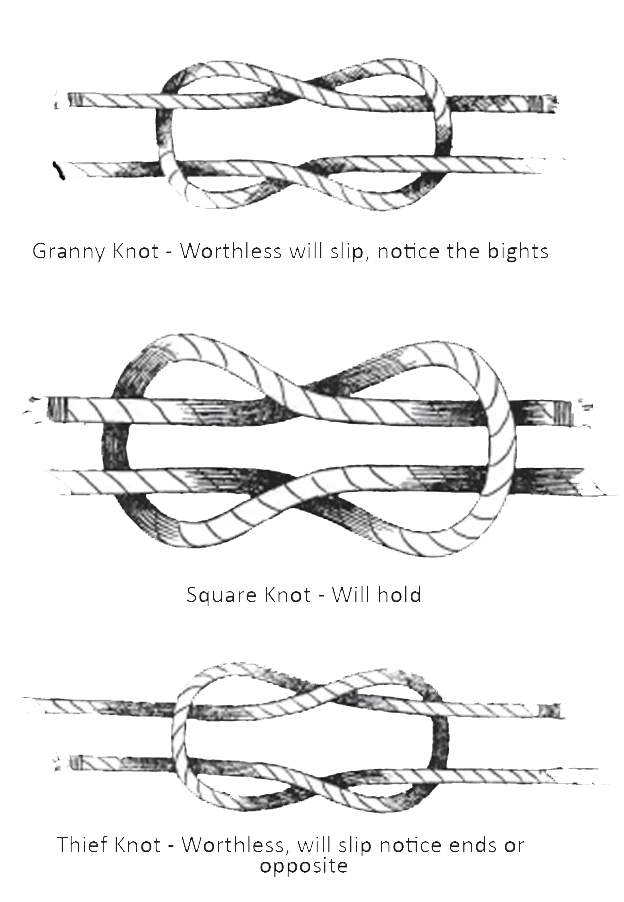
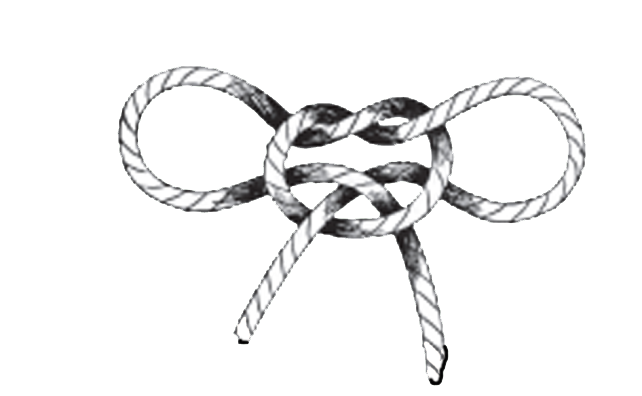
True Love's Knot or Double Bow – Effective in securing wrists of prisoners – as handcuffs, drawing tight and securing with a reef knot. With small twine a man's thumbs may be thus tied behind his back effectively holding him helpless.
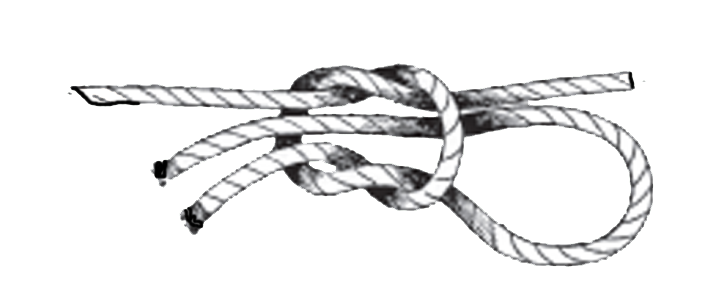
Slip Knot or Draw Knot – Doubling back a reef knot, an other form of slip knot.



